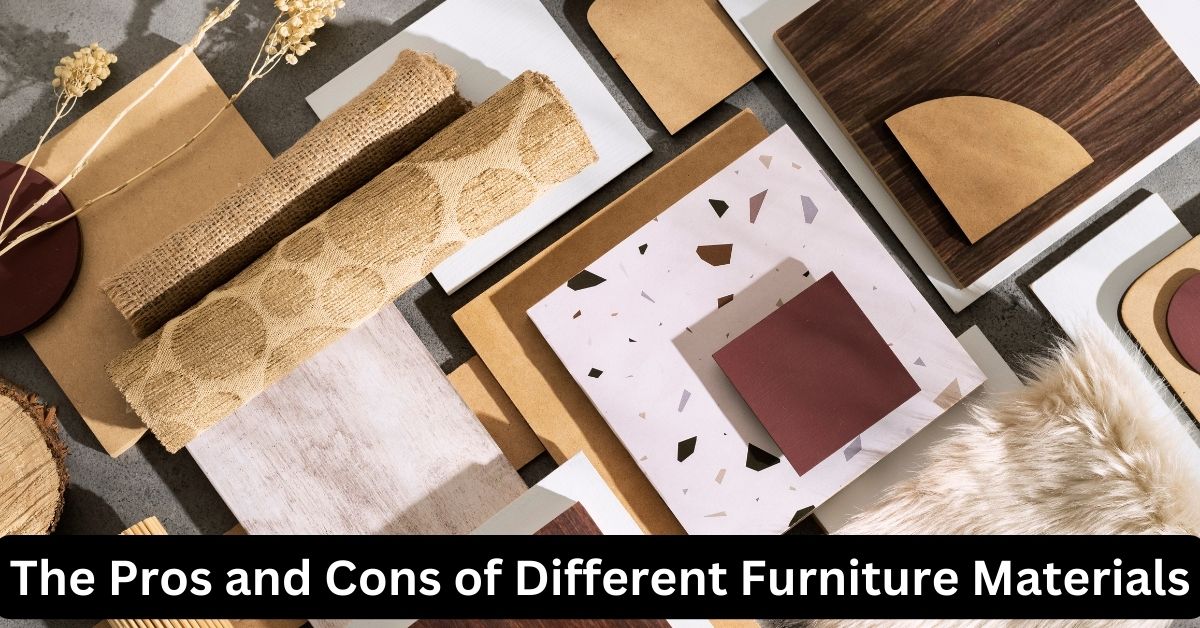Uncategorized
The Pros and Cons of Different Furniture Materials
Furniture is an essential part of any home, and it is crucial to select the right materials to ensure that your furniture lasts long and looks great. Furniture materials vary greatly, with wooden, metal, and plastic being the most common materials used in furniture construction. Each material has its pros and cons, and it is vital to consider these before making a purchase.
Wooden Furniture
Wood is one of the most popular materials used in furniture construction. It is a natural and versatile material that is available in different types and finishes. The beauty of wooden furniture lies in its grain patterns and texture, which add warmth and character to any home. Wood is also durable and can last for many years, making it a worthwhile investment.
One of the significant advantages of wooden furniture is its ability to adapt to different decor styles. Whether you prefer traditional or contemporary decor, wooden furniture can blend in seamlessly. Additionally, wooden furniture is easy to repair and maintain. You can easily fix scratches, dents, and chips by sanding and refinishing the affected area.
However, wooden furniture has its drawbacks. Firstly, it is susceptible to humidity and temperature changes. If exposed to extreme humidity or heat, wooden furniture can expand or warp, affecting its structural integrity. Secondly, wooden furniture can be expensive, especially if it is made from high-quality hardwood. Lastly, wooden furniture is not fire-resistant, and it can easily catch fire in case of a fire outbreak.
Metal Furniture
Metal furniture is becoming increasingly popular due to its modern and sleek appearance. It is a sturdy and durable material that can withstand wear and tear. Metal furniture is available in different finishes, including chrome, brass, and stainless steel, making it a versatile option for any decor style. Additionally, metal furniture is easy to clean and maintain, making it a popular choice for high-traffic areas such as dining rooms and kitchens.
One of the significant advantages of metal furniture is its strength and durability. Metal furniture can withstand heavy use and can last for many years without losing its aesthetic appeal. Additionally, metal furniture is resistant to pests such as termites, which can damage wooden furniture. Lastly, metal furniture is fire-resistant, making it a safe option for any home.
However, metal furniture has its drawbacks. Firstly, metal furniture can be uncomfortable, especially if it does not have cushions or padding. Secondly, metal furniture can be noisy, especially if it is moved or rearranged. Lastly, metal furniture can rust if it is not coated with protective finishes.
Plastic Furniture
Plastic furniture is a popular choice for outdoor spaces such as patios and gardens. It is lightweight, affordable, and available in different colors and designs. Plastic furniture is also resistant to weather elements such as rain and sunlight, making it a low-maintenance option for outdoor areas.
One of the significant advantages of plastic furniture is its affordability. Plastic furniture is relatively cheap compared to other materials such as wood and metal. Additionally, plastic furniture is easy to clean and maintain, making it ideal for outdoor areas where it is exposed to dust and dirt.
However, plastic furniture has its drawbacks. Firstly, plastic furniture is not as durable as other materials such as wood and metal. It can easily crack or break if exposed to heavy use or extreme temperatures. Secondly, plastic furniture is not environmentally friendly. It is made from non-renewable materials such as petroleum, making it a less sustainable option for furniture construction.
Conclusion
In conclusion, furniture materials vary greatly, and each material has its pros and cons. Wooden furniture is durable, versatile, and easy to repair, but it is susceptible to humidity and temperature changes. Metal furniture is sturdy, durable, and fire-resistant, but it can be uncomfortable and noisy. Plastic furniture is affordable, low-maintenance, and weather-resistant, but it is not as durable as other materials
When selecting furniture materials, it is important to consider your specific needs, preferences, and budget. Each material offers unique advantages and disadvantages, and it is up to you to weigh these factors before making a purchase. It is also essential to choose furniture that complements your decor style and enhances the overall aesthetic appeal of your home.
Regardless of the material you choose, it is important to take care of your furniture to ensure it lasts long and looks great. Regular cleaning and maintenance can help preserve the beauty and functionality of your furniture for many years. With the right materials and proper care, your furniture can serve as a functional and stylish addition to your home.

